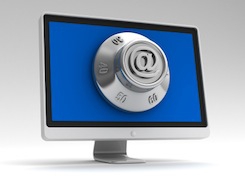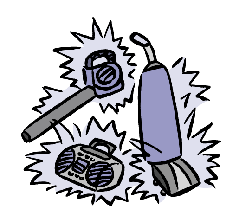Protect your children by teaching them how to stay safe and secure online.
It’s 3 p.m. Do you know what website your child is on? Kids spend nearly two hours a day online—surfing the Web, sending out emails or IMs, updating their Facebook status, or playing games with online capabilities. And this doesn’t include the time they’re on their cell phones texting or using the social capabilities the new smartphones provide.
The Web is a powerful way to learn from and about others. But while its intentions are good, the intentions of those who are on it may not be. There are ways, however, to protect your child from potentially harmful experiences.
Talk with your child.
It’s important to discuss appropriate online behavior, safety and security with your child as soon as they start using a computer. Remind your child that inappropriate content on the Web can have serious consequences and that not everyone out in cyberspace is who they pretend to be. Be sure to communicate your values and use everyday opportunities to show how those values translate to the online community.
Be aware of how your child uses the Web and social networking sites.
Facebook, MySpace, chat rooms, online games, blogs, instant messaging (IM), email—there are as many ways as you can imagine for your child to interact with others online. And you don’t need a computer to access them. Smartphones, game consoles and now even some TVs have the ability to connect online. Ask what sites your child visits and understand how they use those sites.
Protect your child’s personal information.
Talk with your child about using strong passwords to protect themselves online and creating user names that do not provide any personal information (such as Sarah0802 or JerseyJoe). Ensure that any profile pictures of your child for online gaming and others sites are avatars rather than actual photos. Discuss when it’s not ok to click on links provided in emails and other mediums. And be sure to teach your kids how to block email addresses and text numbers.
Help prevent cyberbullying.
Cyberbulling happens when the bully moves from the playground to the Web. This online harassment is growing for teens and young adults and can be in the form of threatening messages, having photos posted without permission, having email or text messages forwarded without permission or having rumors spread online. Talk with your child about what is appropriate behavior online and how to respond if they witness, or are the target of, cyberbullying.
Set parental controls and limit time online.
Use the privacy settings available on social networking sites and blogs to limit who can access your child’s profile—and be sure to have your child limit their online “friends” to people they actually know.
Filtering and blocking tools can limit your child’s access to certain sites or content. You can also block outgoing content, which prevents the sharing of personal information. You can also find certain software that can limit your child’s time online. And monitoring tools can alert you to your child’s online activity.
You should also determine what features you feel are appropriate for your child’s phone and turn off those that aren’t.
Keep the computer centrally located.
Having the computer your children use for social and school activity in a central location helps you monitor time spent online along with where and how that time is spent. Your child is less likely to engage in unsafe behavior if they know that anyone who walks by can see it.
For additional tips and information, along with tools on how to talk with your child about online safety, view the Net Cetera: Chatting with Kids About Being Online guide developed by the Federal Trade Commission, or visit StaySafeOnline.org.
Related Articles:
- Preventing Bullying at School
- Choosing a School: First Steps
- Choosing a School: Explore Your Options
- Choosing a School: How to Evaluate
- Dept. of Education Guide to Choosing a School
- Parents Page at Dept of Education
 Print
Print Email
Email









